On Monday 26 July, the world’s best male mountain bikers will do battle for the Olympic medals in Tokyo. The postponement of the contest by almost a full year has had a negative impact on some of the medal contenders and a positive impact on others. One of those in the latter group is South Africa’s Alan Hatherly. We asked him a few burning questions ahead of the Games.
By Sean Badenhorst
If the Tokyo Games had gone ahead last year as planned, South Africa’s Alan Hatherly probably wouldn’t have been considered an outside shot for a medal. But the global reaction to Covid-19 gave the world a real shake and now the 25-year-old Cannondale Factory Racing rider finds himself among the favourites for a top five finish and, possibly a medal.
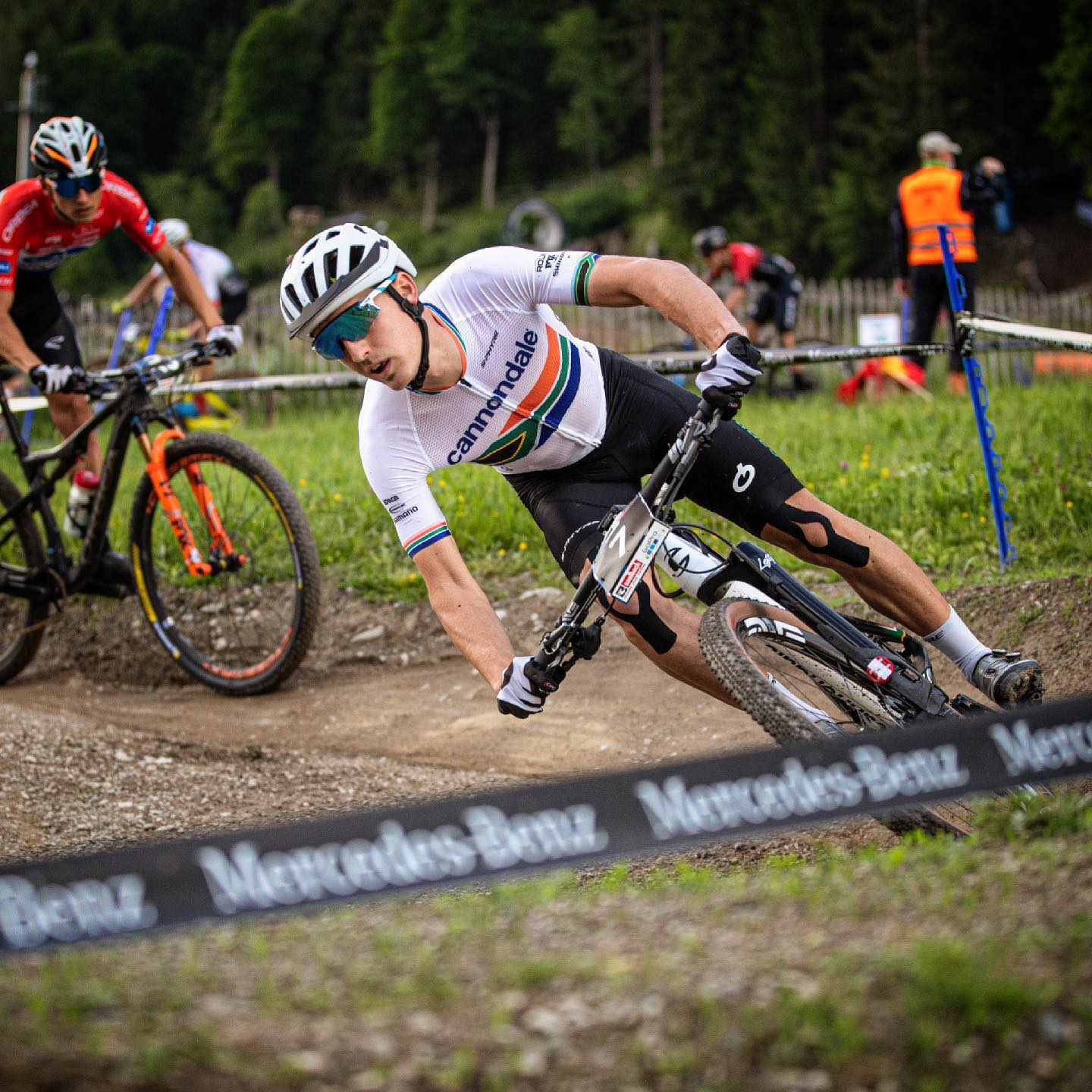
Alan Hatherly is aiming for a top-five finish at the Tokyo Olympics. | Photo: Cannondale Factory Racing
We fired some burning questions off to Hatherly this week at his training camp in Croatia to find out just how his build-up is going, how he feels about the course and why his season has gone better than expected.
Judging by your social media posts in recent weeks, you appear to be aiming for a podium at all World Cup races and seem a bit disappointed when you don’t finish in the top five. Is this correct?
Reaching the podium is always the goal at a World Cup event and a lot of factors come into play and need to align to make it happen. I’ve been a little frustrated with myself at times when I’ve positioned myself outside that front group that goes for podium and worked my way through the field to finish just off the group – meaning I had the shape to have gone with that group in the first place! However, I’m still going above and beyond the goals I set out for myself this year which was to consistently finish inside the top 10 which I’ve managed to do so far. I’m really happy with my season so far and the progress I’m making from World Cup to World Cup. The bigger races of the season are approaching fast and I couldn’t be more excited.
You often thank your support team in your post-race social media posts. And you have had some very solid/impressive results this year. Does this mean you have made a smooth transition to CFR?
I felt at home straight away with the CFR crew. They’ve been incredibly welcoming and made the transition as smooth as possible. The team has a real family feeling to it with a big performance background. The support, constant communication and performance focus has really allowed me to improve my training and racing and build my confidence towards racing at the front end of the World Cups.
John Wakefield has been your coach for some time. Were you able to retain him as your coach when you moved to CFR?
It was my decision when making the transition to CFR to start completely fresh and new. The team’s history shows that what they are doing works extremely well and I bought into that straight away, making the transition to coaching with Phil Dixon.
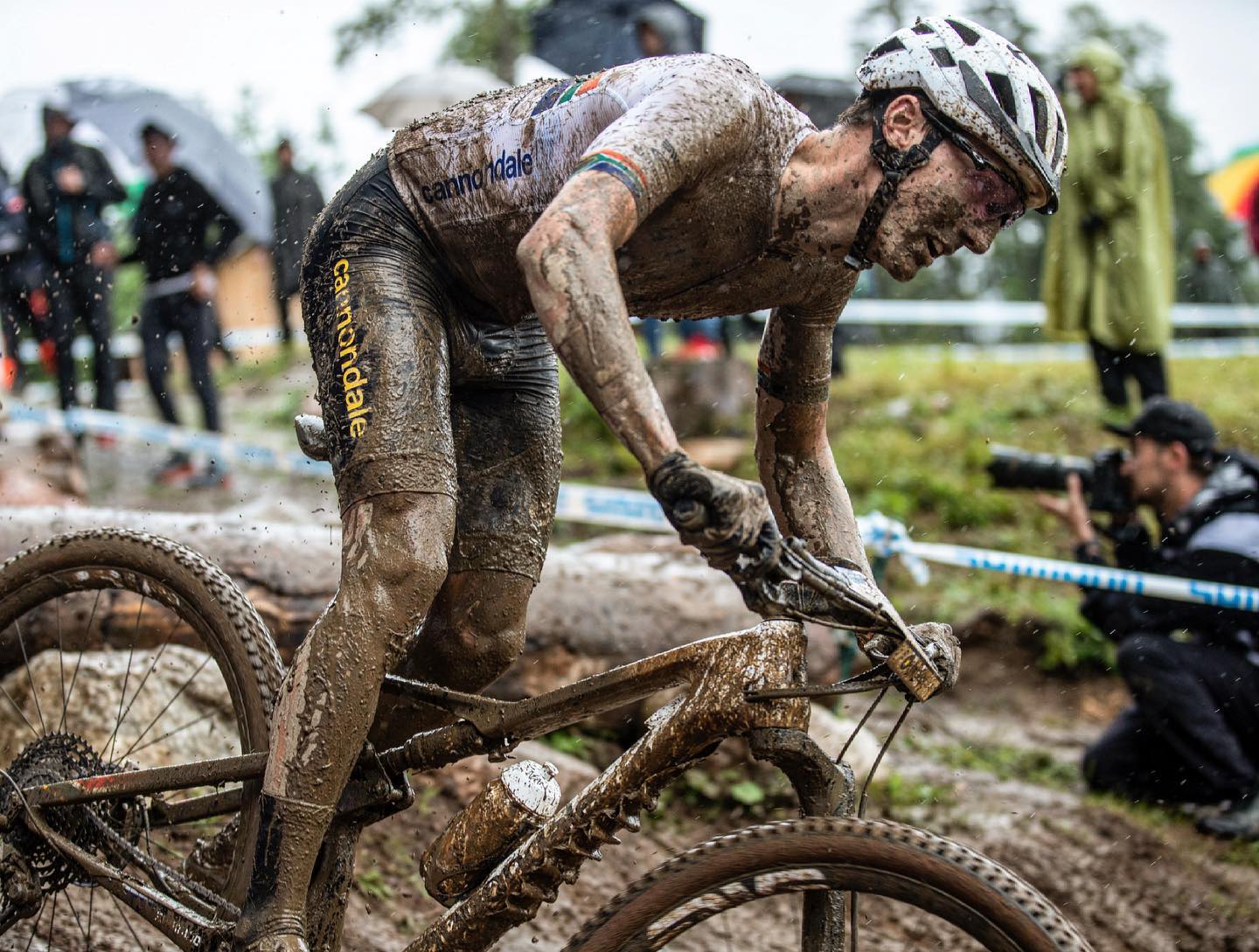
Although he prefers racing in dry conditions, most of his best results have come in muddy, wet conditions. | Photo: Cannondale Factory Racing
There have been a lot of muddy races at this year’s World Cup series so far. And the two World Cups last year for that matter. You seem to be very consistent and in podium contention when it’s muddy. Is that a coincidence or do you feel you race better in the wet conditions than most?
I’ve never been a fan of muddy races; however, I’ve had my best World Cup results in slippery conditions (I also won the Under-23 World Champs on a slippery course). It’s something I worked really hard on in my Under-23 years because I had no chance to be in contention at first when I started to race in Europe. A lot of the mistakes were down to tyre choice and bike setup actually. I still prefer dry and hot conditions personally but I’m really happy to be resilient enough to compete in all conditions at the moment.
Have you ridden the Olympic XCO course yet?
Yes, I was able to compete at the test event in 2019. It was a crucial trip and event for me to discover Izu, the region where the race will be held. The trip provided valuable insight, which has allowed me to prepare and plan ahead for the event.
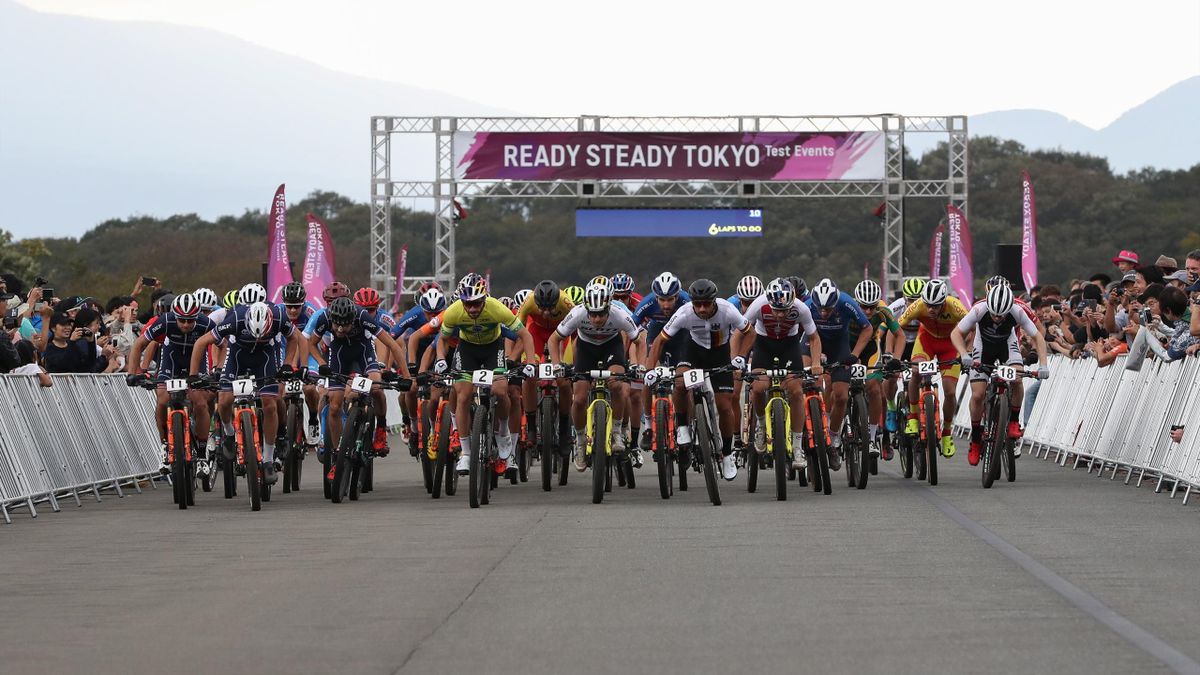
Hatherly (fifth from right) competed in the Tokyo Test Event in October 2019, so he is familiar with the course. | Photo: Ready Steady Tokyo
Having watched a video of the full lap in Tokyo, it seems like quite a technical course with shortish climbs. Is this your perception? Does this suit you?
The course has a lot of natural features and elements, making it a real mountain biker’s course in my opinion. The climbs are really steep with little momentum carried into them so it’s going to be a really punchy race if it plays out like the test event in 2019. I felt really good on the course back then before I had put some focused work in for the course, so I think it’s going to work out really well for me (fingers crossed).
Your consistency in World Cups this year, along with your impressive 4th at Les Get gives you the status as an outsider for a medal. What are your objectives for Tokyo?
A medal would be a dream come true but my goal is for another top five finish.
Who do you feel are the medal favourites for Tokyo?
I would say Mathieu Van Der Poel, Tom Pidcock, Mathias Fluckiger and Ondrej Cink.
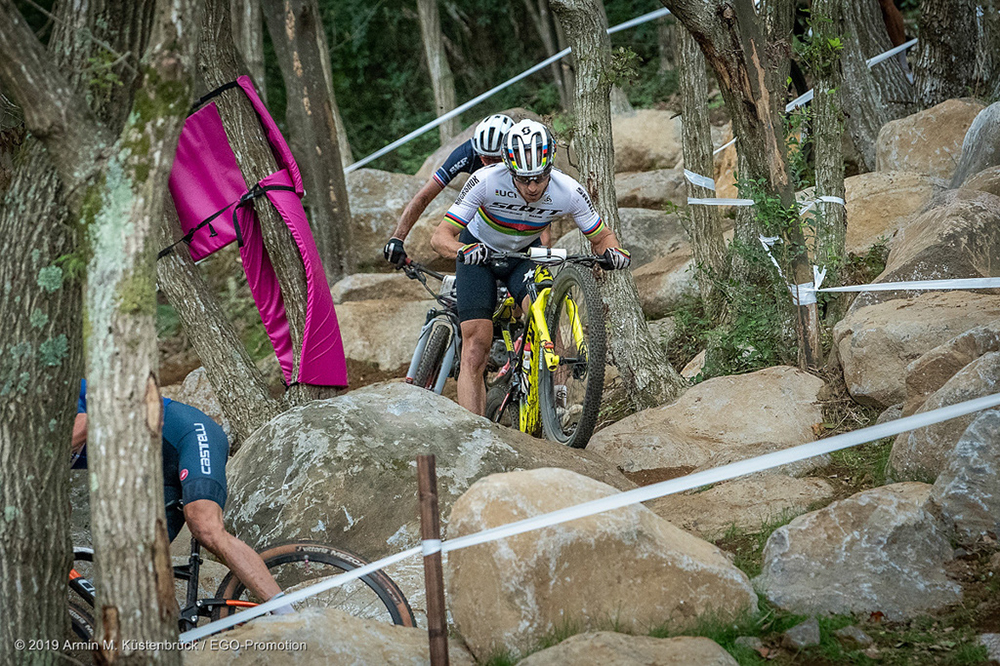
Rio Olympic champion, Nino Schurter in action at the Tokyo Test Event, which he won, in October 2019
Apparently Tokyo can get hot in summer. Have you been preparing for this specifically or do you feel that being South African gives you an advantage in this regard?
Yes! The conditions predicted for us will be 30 degrees Celsius at 80-90% humidity so the heat factor is going to be a key point for the race. I do feel being a South African does help with heat management but with the Cape Town winter, I lost the adaption I got earlier in the year when the temperatures were up. I spent the last week in Croatia (30-32 deg C) doing a mini training camp, getting used to the heat again and I managed to adapt and make good progress in the short time spent there.
What will your final prep for Tokyo look like? Will you be focusing on anything specific in your training?
My final preparations have just been focusing on heat management. The shape is really good so it’s now just a matter of dialling in all the small details and flying into Japan fresh to tackle the jetlag and have the energy to be adaptable as we settle into the Olympic village.
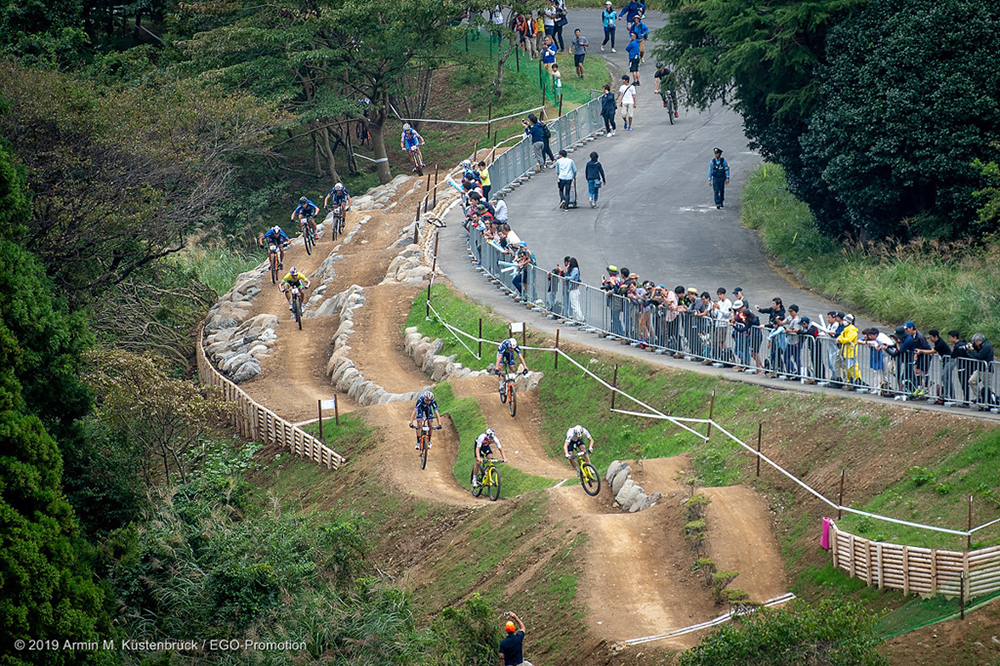
The Tokyo Olympics course was purpose built for the Games and includes a number of technical sections
Having come from a DH racing background, you always appear very relaxed and in control on descents and through anything technical. Do you feel that this level of skill is similar among say the top 15-20 World Cup finishers, or do you feel it differs for some riders?
I really am grateful for my DH upbringing because it is really paying off in the long term. For me, it’s about being comfortable and confident to carry the speed and hit the lines perfectly when under pressure and also on the limit, after climbing all out for a few minutes before dropping in. In training I feel most of the World Cup riders can smash the descents; however, under race conditions and under some pressure, the other riders tend to slow down a bit whereas I feel I can hit the descents full gas and still recover well.
Did it take a while to adapt to the Scalpel when you first switched teams and what do you really like about the Scalpel?
I felt comfortable straight away honestly. It’s a different situation really when you switch from one factory team to another because the initial bike we get is already dialled in to what the team has discovered over the years and it’s just a few small tweaks that go on top of it to suit each of us individually. At first it took some adapting but now it’s what I love the most – the open suspension. I can feel more of what the bike is doing under me and it makes dialling in the race setup so much easier.
The Men’s XCO race in Tokyo will take place on Monday 26 July at 15h00 Tokyo time, which is 08h00 South African time. It will be broadcast live on SuperSport.

